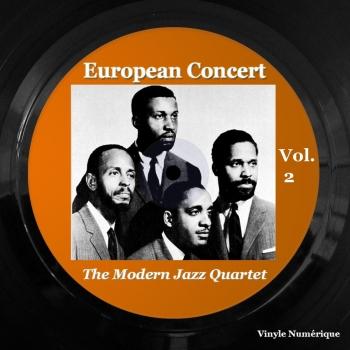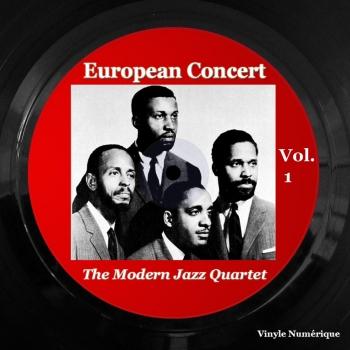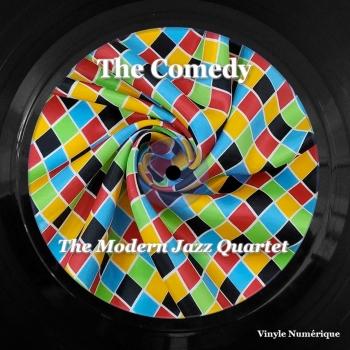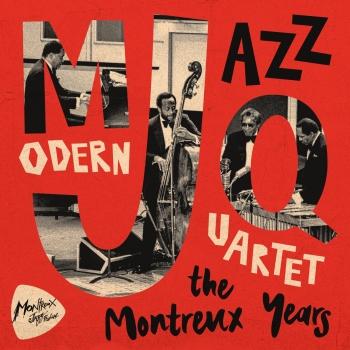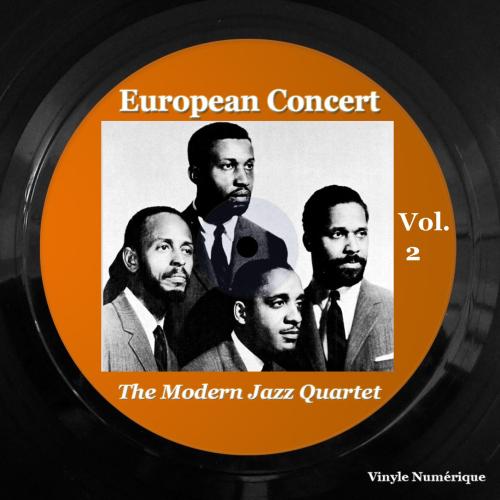
European Concert, Vol. 2 (Remastered) The Modern Jazz Quartet
Album info
Album-Release:
1960
HRA-Release:
02.06.2023
Album including Album cover
I`m sorry!
Dear HIGHRESAUDIO Visitor,
due to territorial constraints and also different releases dates in each country you currently can`t purchase this album. We are updating our release dates twice a week. So, please feel free to check from time-to-time, if the album is available for your country.
We suggest, that you bookmark the album and use our Short List function.
Thank you for your understanding and patience.
Yours sincerely, HIGHRESAUDIO
- 1 Pyramid (Blues for Junior) 09:01
- 2 It Don't Mean a Thing 05:48
- 3 Skating in Central Park 06:09
- 4 The Cylinder 06:45
- 5 Round Midnight 03:51
- 6 Bags' Groove 05:13
- 7 I'll Remember April 04:57
Info for European Concert, Vol. 2 (Remastered)
Volume 2 of a double-length live set from the legendary Modern Jazz Quartet – recorded in Scandinavia in 1960, almost as a summation of the group's growing genius in the 50s! The tunes are a mix of John Lewis and Milt Jackson originals, plus other songs all given the wonderful MJQ twist – distilled into a sublime blend of piano, vibes, bass, and drums – all delivered with a sense of class, but never too much polish. Titles include "Pyramid", "It Don't Mean A Thing", "The Cylinder", "Round Midnight", "Bag's Groove", and "Skating In Central Park".
The Modern Jazz Quartet had an extraordinary career stretching from 1946 to 1974 and then again as a reformed unit from 1981 to 1993. Considered as one of the finest jazz groups ever assembled AVID has again returned to them for another release in our Four Classic album series. This time we have moved into the 1960’s with a classic live album and two more experimental albums featuring the “mysterious” Third Stream Music! The European Concert is now considered by many to be the defining statement of the band as a recording and live unit. Third Stream Music finds the quartet in a more experimental mood joined for two tracks by the Jimmy Giuffre 3 and for another by the Beaux Arts String Quartet. Third Stream Music was an idea developed by Gunther Schuller a composer and French horn player that suggested a musical collaboration between the two worlds of jazz and classical. What some may call Chamber Jazz? The idea is continued on some key tracks on Lonely Woman, the title track being by the “controversial” jazz innovator Ornette Coleman who John Lewis was championing during the great man’s early struggle for credibility and respect. Here the Quartet do not wig out or anything crazy but reveal the compositional skills of the man from Texas, what the original liner notes call “third stream and a half music”. The album is thus a combination of the more experimental and the more recognised sound of The Modern Jazz Quartet.
John Lewis, piano
Milt Jackson, vibraphone
Percy Heath, bass
Connie Kay, drums
Digitally remastered
The Modern Jazz Quartet were incredibly important in the development of jazz in the 1950s, and although they officially disbanded in 1974, they’ve reformed for both concerts and recordings several times since then, making them now an “evergreen” jazz band. It was not always so.
The Modern Jazz Quartet was originally formed as the Milt Jackson Quartet (which, conveniently, had the same initials, MJQ) and consisted of Jackson on vibraphone, John Lewis on piano, Percy Heath on bass and Kenny Clarke on drums. Of these, Clarke was the veteran of the group, a drummer who had been at Minton’s after-hours club in 1939, where Charlie Parker, Dizzy Gillespie, Thelonious Monk, Charlie Christian and Clarke invented “bebop” or bop, a harmonically advanced and challenging kind of new jazz.
Clarke served in the Army during World War II, and there he met and became friends with John Lewis, who was fresh out of the University of New Mexico where he’d studied anthropology and music. In 1946 both joined the Dizzy Gillespie Orchestra, the only bop big band, and there they met vibist Milt Jackson. Until then only two jazz musicians were well known for playing this electrified xylophone, Lionel Hampton (famous for his work in the ’30s with Benny Goodman and a band leader himself in the ’40s) and Red Norvo (whose early ’50s trio with guitarist Tal Farlowe and bassist Charles Mingus catapulted him from the swing era into modern jazz). Jackson was the first to adapt the instrument to a bop context. And also in Gillespie’s band they met Ray Brown, a bassist who appears on some early MJQ recordings.
In 1948 and 1949 Lewis and Clarke were also participants in the Miles Davis Nonet sessions for Capitol which were later dubbed Birth of the Cool. The group, nominally fronted by Davis, was a composer/arranger’s band, showcasing the writing of Gerry Mulligan, John Lewis, Gil Evans and John Carisi. Lewis contributed two originals and arranged three other pieces in the band’s repertoire. During this same period Jackson was making recordings for Blue Note, Prestige and Savoy, all small but important jazz labels.
The MJQ was formed in 1952; its first recording was the 10-inch Prestige album, Modern Jazz Quartet with Milt Jackson (PRLP-160), released in 1953, which is now valued at from $60 to $150, depending on condition. This was followed the same year by Modern Jazz Quartet, Volume 2 (PRLP-170), another 10-inch LP which has the same value. In 1955 the MJQ made two 12-inch albums, Concorde for Prestige (PRLP-7005) ($30 to $75), and Modern Jazz Quartet for Savoy (MG-12046) ($20 to $50). That year drummer Clarke dropped out and was replaced by Connie Kay, setting the personnel in place for the rest of the MJQ’s career.
But 1956 was the year in which everything came together for the group, and this was due to their signing with Atlantic Records. Atlantic was the reflection of the Ertegun brothers’ enthusiasms. The sons of Turkish diplomats, they loved R&B and jazz. Atlantic recorded Ray Charles, the Clovers, Ruth Brown, and a number of R&B groups for singles, and established an ambitious jazz program on LPs. Unlike Prestige and Savoy (and, to a lesser extent, Blue Note) – labels known for recording jam sessions – Atlantic spent time on preparations for each album, and many of Atlantic’s jazz albums were ambitious projects. (Source: www.holeintheweb.com)
This album contains no booklet.










